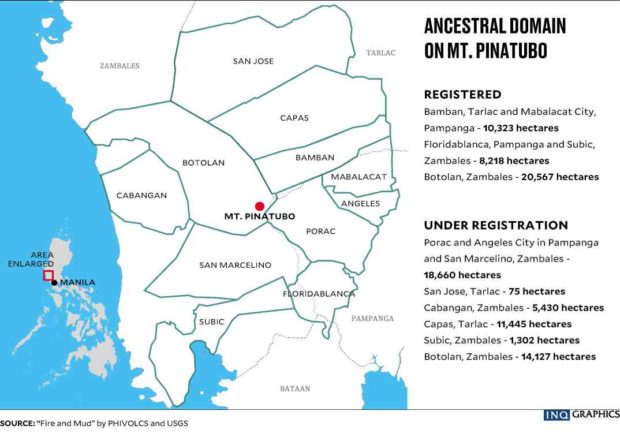What went before: Mt. Pinatubo eruption
On June 15, 1991, Mt. Pinatubo erupted violently, sending high-speed avalanches of superheated ash, gas and other volcanic debris down its slopes. The eruption was considered by volcanologists the second largest in the 20th century, next to the 1912 eruption of Mt. Novarupta in Alaska.
The unrest of Pinatubo, dormant for several centuries, followed the catastrophic 7.8-magnitude earthquake that shook Luzon on July 16, 1990, triggering an increase in the volcano’s steam emissions.
By April 1991, molten rock (magma) rose from more than 32 kilometers beneath the volcano, causing steam explosions until early June.
On June 12, 1991, gas-charged magma reached the surface in a series of explosions until June 15, when the gigantic eruption propelled a 40-km-high column of ash that blanketed more than 2,000 square km of Luzon.
Ash rained further across 4 million sq km of the South China Sea and Southeast Asia, according to the Philippine Institute of Volcanology and Seismology.
Article continues after this advertisementThick ashfall, soaked and made heavier by rains from Typhoon “Diding” (international name: Yunya), destroyed 364 villages in the provinces of Zambales, Pampanga and Tarlac that straddle Pinatubo.
Article continues after this advertisementThe eruptions killed more than 1,000 people and displaced 1.5 million others. It damaged P3.8 billion worth of public infrastructure, particularly irrigation and flood control system, roads and bridges.
Mudflows (lahar) were a constant threat for a decade during intense rainfall or whenever a typhoon strikes.
The eruptions pumped nearly 20 million tons of sulfur dioxide into the stratosphere, causing global temperatures to drop from 1991 to 1993 by about 0.5 degrees Celsius.
Because so much magma and rock were removed from beneath, Pinatubo’s summit collapsed and left a 2 km-wide caldera, a large cauldron-like depression, which later evolved into a lake. — INQUIRER RESEARCH
SOURCES: PHIVOLCS.DOST.GOV.PH, PUBS.USGS.GOV, INQUIRER ARCHIVES
